Kingdom Animalia Subphylum Vertebrata Suborder Sauria Scientific name Cryptoblepharus egeriae Rank Species | Phylum Chordata Order Squamata Infraorder Scincomorpha Higher classification Cryptoblepharus | |
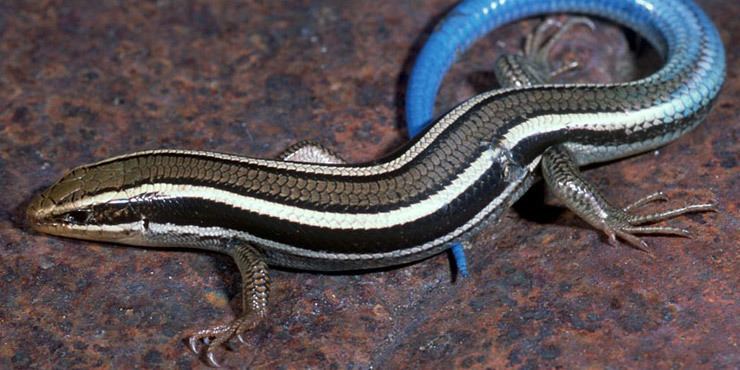 | ||
Similar Skink, Reptile, Plestiodon, Plestiodon inexpectatus, Eumeces | ||
How to tame a blue tailed skink five lined skink
The blue-tailed (Cryptoblepharus egeriae) is a species of skink, a lizard native to Australia's Christmas Island, and is not closely related to the Plestiodon skinks of North America, whose juveniles are known for their blue tails. It is relatively small with a black body with yellow stripes going to a bright blue tail.
Contents
- How to tame a blue tailed skink five lined skink
- Catch of the day blue tailed skink lizard reptile july 2015 freeze
- Etymology
- Characteristics
- Tails
- Diet
- Habitat
- References
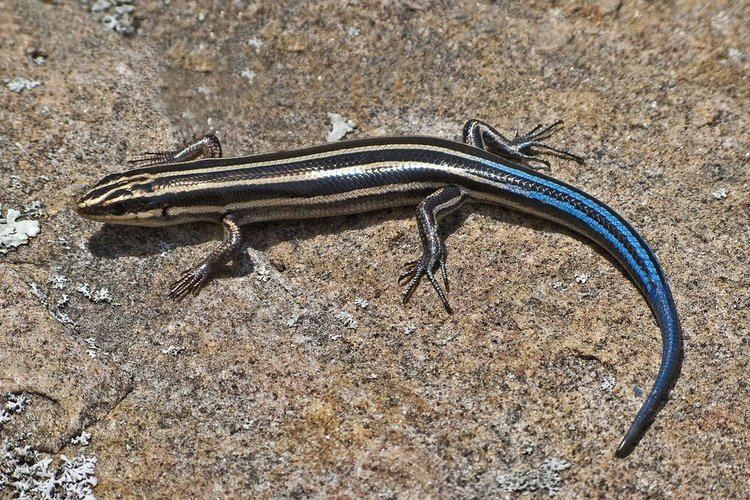
Catch of the day blue tailed skink lizard reptile july 2015 freeze
Etymology
The specific name, egeriae, is in honor of HMS Egeria.
Characteristics
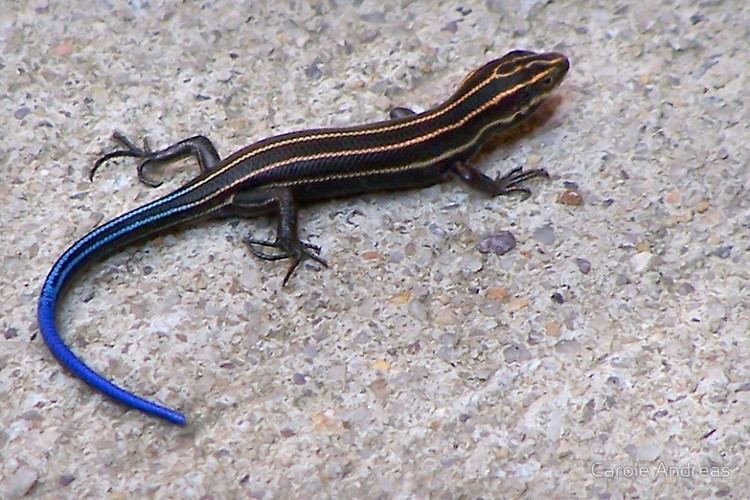
Blue-tailed skinks are usually about 4 to 8 cm (1.6 to 3.1 in) long. When they become frightened, they have the ability to pop their tail off, and it will continue to wiggle and distract their predator while they run away. When young they have a dark black body with bright yellow stripes leading from the back of the neck down to the meeting of the bright blue tail. As the juvenile males age, they lose their yellowish stripes and their back starts to become a brownish black colour, and they begin to grow a reddish colour underneath the neck during the mating seasons. Females usually keep their blue tail for their whole life, though. It is thought that the bright colouring on the tail is intended to direct the predator's attention to it, instead of the vulnerable body. They also have a snake-like head and appear to hold a Jacobson's organ, as they exhibit the "tongue-flicking" snakes use to "taste" their surroundings.
Tails
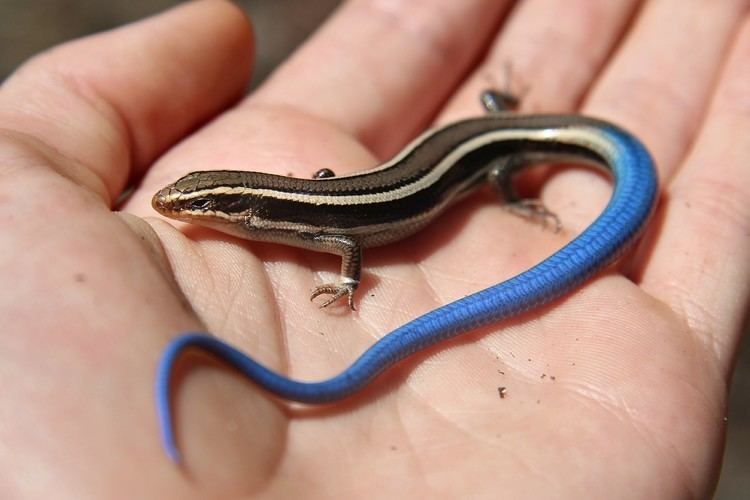
The skink's blue tail acts as a target for predators, drawing attention away from the skink's fleshy vitals. In a study conducted, scientists painted various body parts of several clay skink decoys blue and introduced them to birds. The birds attacked the blue parts of the decoys. In real life, when a predator attacks the blue part of a skink (its tail), the skink drops its tail and can get away safely.
Diet
The blue-tailed skink eats small insects and worms.
Habitat
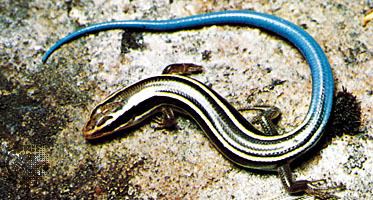
Blue-tailed skinks often burrow and build tunnels so they have access to a hole at any time. They can usually climb very well. They are commonly observed on low vegetation and low on tree trunks.
